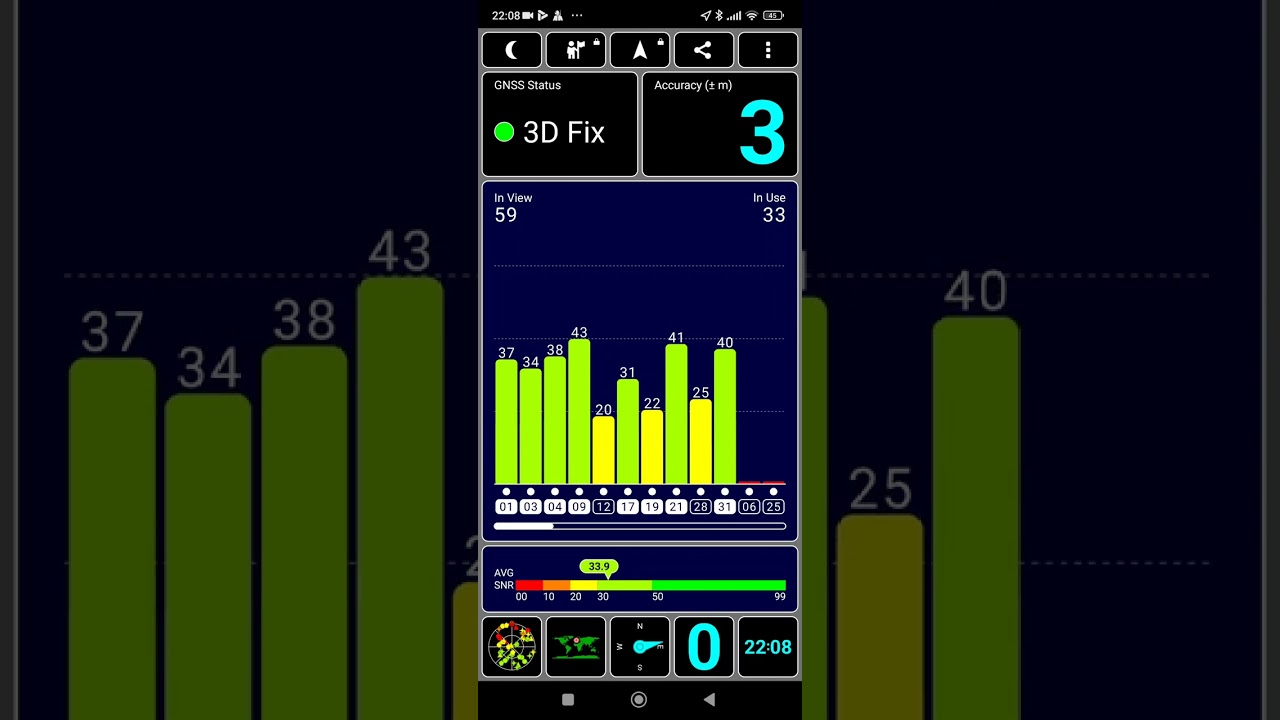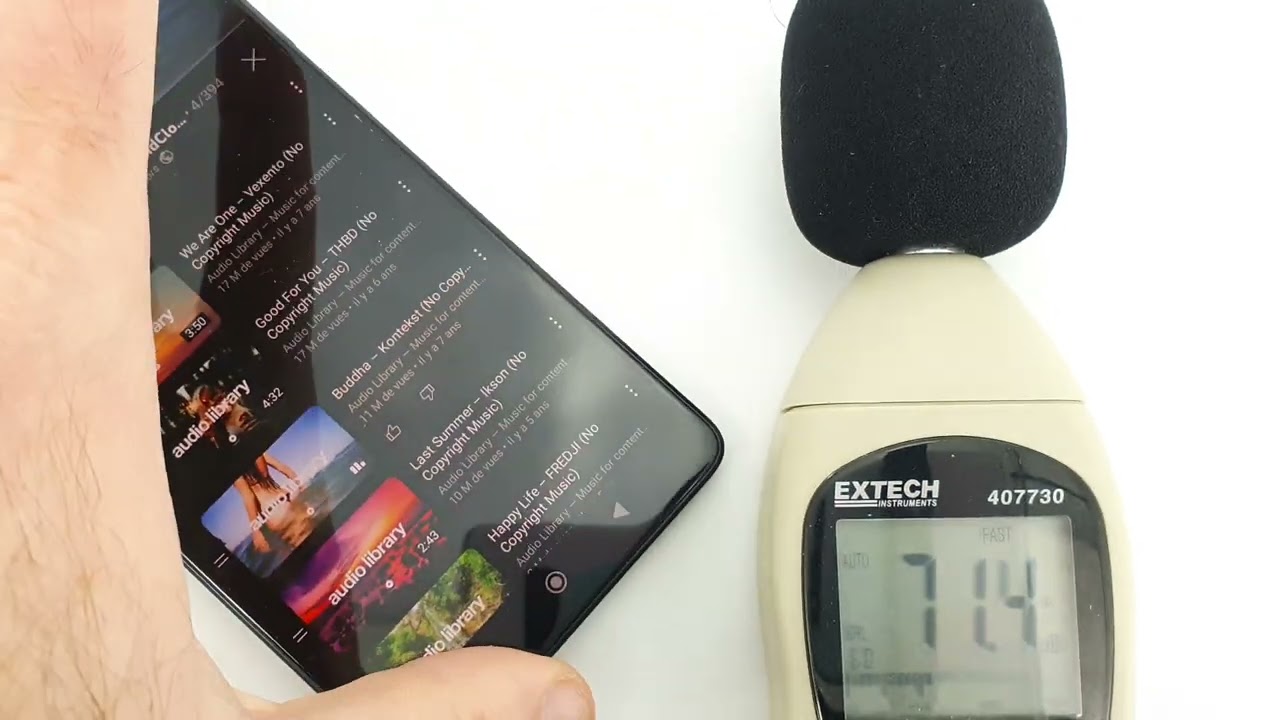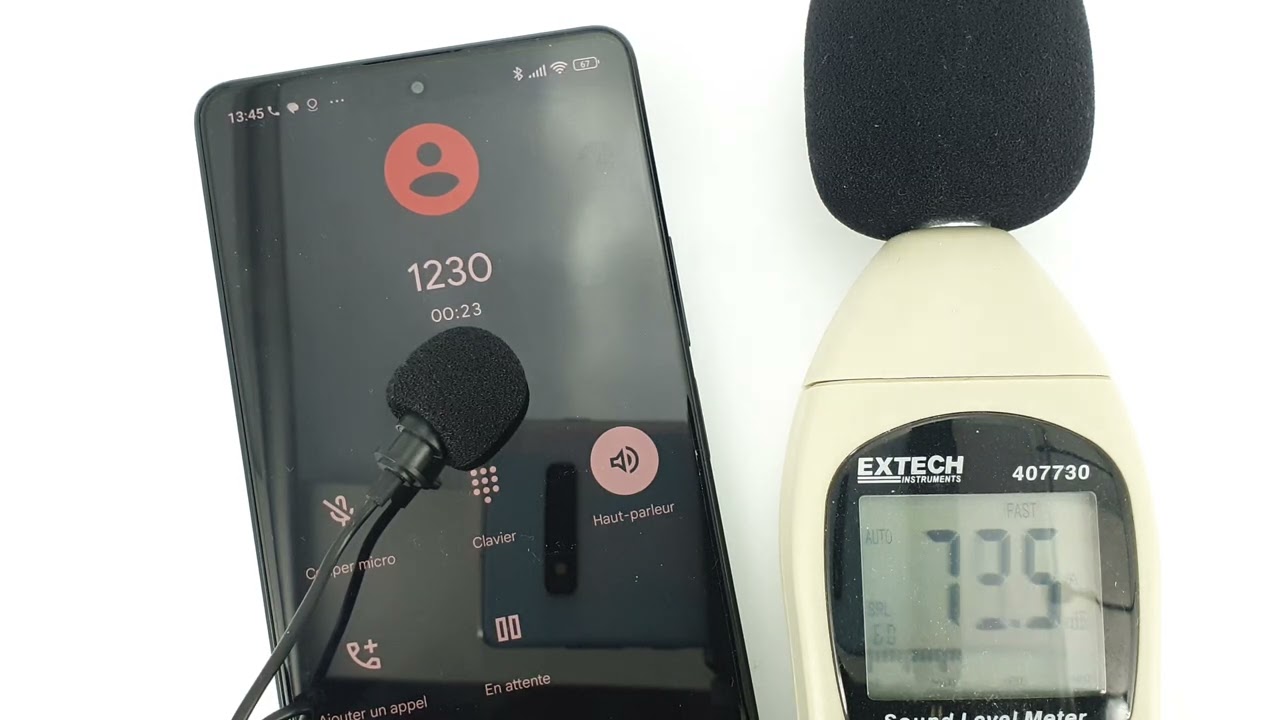Smartphones
POCO F5 : test / review
Published on: 08-05-2023 / Modified: 01-10-2023
After launching the POCO M5 at the end of last year and the POCO X5 two months ago, it's now the turn of the F range to pass to the fifth generation. The F range from POCO represents the top of the range where the brand mixes the finesse in the aesthetics with the brutality in the performances. The POCO F4 had set the bar quite high, this new POCO F5 sets the bar even higher.
This POCO F5 is the 17th smartphone of this brand that I test, so I will be able to compare this new model with the previous generations and see if this phone brings new things or if it is a copy of another model.
Who is this phone for? Do we need this much performance? How well does the phone handle heat dissipation? There are a lot of questions that I will try to answer in this test, let's go!
Introductory offer
The POCO F5 will be available from May 9th on the official website:POCO F5 on official website
The POCO F5 is available from 429€
For the launch, POCO has put a lot of effort to make you buy on the official website. First there is a 50€ discount for the fastest, then you can get an additional 30€ discount by registering your phone. By buying this phone on the official website, you will also receive points that you can use for your next purchases.
Manufacturer web site:
https://www.po.co
Structure of my tests
I test the phones according to a pre-established structure (see below) to provide you with as much information as possible. Unfortunately, this takes a long time. Some tests like network performance tests take several days and for photo tests I sometimes have to wait until the weather is suitable to take pictures in good conditions. I am therefore obliged to publish the tests step by step, so I invite you to come back if the test is not complete at the time of your visit.Price Poco F5
The list below shows the prices for the Poco F5 from more than 50 sites around the world. If you are not satisfied with any price, you can subscribe to a price alert to be the first to be notified when the price drops.The above links are affiliate links from companies such as Amazon, Gearbest, Aliexpress,... If you appreciate my work, I would be grateful if you could purchase these products through these links. It costs you absolutely nothing but I get a small commission that allows me to buy the material I test. Thank you very much!
Timeline
April 21, 2023: I received the POCO F5 in preview to test it before the launch scheduled for May 10, 2023Why this phone?
I mentioned in the introduction of this test that this new POCO is the 17th phone of this brand that I test and until now this brand has always got a good score with my evaluation system. There are of course models that are a bit more disappointing than others but I never had to advise against one of these phones.I tested my first POCO F with the F2 Pro and that phone was so good that I still have it today. The others that followed brought something new each time. The POCO F5 takes some elements from the previous generation like the photo part but it runs on a brand new high performance architecture which should combine performance and energy efficiency.
Unpacking
The box of the POCO F5 is the same as all the POCO boxes from the entry level to the premium models. The box contains the phone, a pocket with the manual, a transparent protective shell, a needle for the sim drawer. There is also a 67W charger and a USB cable
First configuration
The POCO F5 runs under MIUI 14 which is an overlay of Android 13. I didn't notice anything new in the configuration of the phone, the screens are the same as on the other phones of the Xiaomi group. I noticed that the carousel feature has been added on the POCO brand as well, it's a feature that uses an ad network so you might as well know that before you enable it.Finish
The F range at POCO is the premium category of the brand and it is obvious at first contact. The POCO F5 is very thin (7.9mm) and elegant with its glass back. The other models M and X use mainly plastic and are generally thicker. The back is covered with a glass surface which gives a premium effect but which will probably give you to take a small cleaning cloth everywhere with you because it is the kind of material that leaves fingerprints. The integration of the photo block is different from the previous generation, the 2 main sensors are isolated without the presence of a rectangular block. The sensors are encircled by a texture that reminds me of a camera diaphragm.
The 6.67 inch screen occupies 89% of the front panel, we are here on an experience of almost full screen. The edges are much thinner than other POCO models, the selfie sensor is quite discreet. I will come back later on the screen, it is a screen that has many qualities.
On the right side we find the usual volume buttons and the start button which is also used as a fingerprint sensor. These buttons are located on the top. If you have small hands, you might have difficulties to use the volume buttons.
On the left side there is nothing because the sim drawer has been placed at the bottom of the phone.
On the bottom part, we find the usb type c port, an audio output, a sim drawer type recto/verso and a sound sensor.
On the top edge, there is a jack type audio output, an infrared port, another sound output and another sound sensor.
I can't say that this phone is original or revolutionary, it is simple and elegant. It is quite comparable to what Samsung does in the same price range.
Specifications
The information below comes from the Device Info HW application. The application provides detailed technical information about the tested phone. I tested the POCO F5 in its 12Gb / 256Gb version, you will find all the technical specifications in the following screenshots. There are several versions with a different amount of memory but this does not affect the performance of the phone.
Here is what I found from the technical specifications:
- Qualcomm architecture (I come back to this point in the next paragraph)
- the wifi chip is a chip that I have already tested in other phones (Qualcomm 6490)
- new chip for sound that I have never tested
- the screen is not the same as the previous generation, it offers 3 frequencies (60/90/120hz)
- the screen is compatible with Dolby Vision, HDR10, HLG and HDR10+
- the memory is in UFS 3.1, so transfers will be ultra fast
CPU / GPU Performance
The big news of this POCO F5 is the use of the Qualcomm Snapdragon 7+ Gen2 CPU (SM7475) which is engraved in 4 mm. This is not the first phone in the world to use this CPU, the Redmi Note 12 Turbo (only available in China) is also equipped with it. This processor should bring a huge performance gain over the previous generation but the gain will not only be a performance gain, the CPU consumption should also be better controlled. The previous generation was very greedy and the battery rose quickly in temperature, this should not be the case with this model but you can discover it in the paragraph on the battery. For the graphics, the POCO F5 uses an Adreno 725, we are here also in a high level of performance but I tested more powerful phones such as the Poco F4 GT or the Samsung Galaxy S23. A priori no game or application should be able to put this phone in default.
Benchmark Antutu/3DMark
I got a score of 910362 points with Antutu v9, this is the highest score I've gotten but keep in mind that Antutu v9 tends to be more generous in points than Antutu v8. I didn't manage to run v8 on this phone. So it may not be the most powerful phone, but it is certainly one of the most powerful. With this kind of performance, you're safe for a long time because I can't directly see what kind of games could put this phone in trouble.If I look at the result in detail, it's mostly on the CPU side that this phone stands out, it outperforms all the other phones I tested by a nice margin. On the graphics side, however, the POCO F4 GT does better but at the expense of overheating management and battery life.
Gaming
To test the performance in game, I download the mobile PUBG game and evaluate the in-game experience, graphics level and depth of vision. This game is quite demanding and should help you evaluating the performance of a phone.

With such a high Antutu score, one can expect a high level experience in game and this is indeed the case. PUBG Mobile runs in HD Extreme mode with 60 FPS at all times. The level of graphics is therefore at its maximum, the game is perfectly fluid and the 120hz screen will further amplify this fluidity of animations. Over the 10 minutes of this test, the phone did not heat up at all, this was not the case with the Black Shark or the POCO F4 GT.
The temperature will obviously rise if you play for a long time but the problem will be much less pronounced than on the F4 GT. The power/performance ratio of this POCO F5 is much better.
Network performance
The POCO F5 supports a wide range of 4G and 5G frequencies, so you should be able to use it everywhere in Europe.Signal 4G (from December 2020)
I decided to change the methodology for measuring the network because I noticed that the configuration of the mobile network changes over time. This makes it more difficult to compare phones because the conditions are no longer exactly the same.
To overcome this problem, I set up a device that captures 24 hours a day about ten parameters from the mobile network (ex: cell id, rssi, rsrq, snr, frequency,...). I then place the phone next to the device for 24 to 48 hours taking the same measurements so that I can compare them.
Overview of the phones tested with this methodology
I made 1321 measurements to evaluate the 4G network sensitivity of this phone and got an average signal of -95.05 dBm there while I got an average signal of -91.69 dBm with the probe at the same time. So there is a difference of a few dBm which indicates that the sensitivity of this POCO is quite average. It is neither good nor bad, it is somewhere in the middle of these two extremes.
Download/Upload speed
To test the download speed, I have identified some 4G cells offering good performance where I test all my devices several times to see what download and upload speed they can achieve.
Wifi performance
To test a phone's ability to receive the network properly, I take measurements near my router and then remotely (and always at the same place). This gives me an average in dBm where a value of -90 dBm indicates poorer performance than a value at -30 dBm.Wifi signal
I got an average signal of -14 dBm near the router and -64 dBm at a distance. The score near the router is one of the best results I got, so the sensitivity is excellent over a short distance. For the distance measurement, the result is good but not exceptional.
Download/Upload speed
To test the speed in Wifi, I connect to my router in 2.4Ghz and 5Ghz (if available) and use the Ookla application to measure the speed.
GPS performance
To test the accuracy of the GPS signal, I use two positioning applications to evaluate the difference between the actual position and the position indicated by the phone. This test is done outdoors with nothing to obstruct the signal. An accuracy level of up to 3 meters can easily be corrected by an application (e.g. Google Maps).

I measured the accuracy level of the GPS to get an accuracy of 3 meters as it is often the case with Qualcomm chips. I also checked my position on a map to compare it to the position detected by the phone and the phone did indeed locate me at about 3 meters on a clear day.
This phone supports L1, E1, B1 and B1C.
Battery range
To test battery life I developed an application that measures the battery level minute by minute until the battery is empty. This application consumes about ten percent of the phone's resources and I do a test with 100 brightness. This test aims to reproduce a contemplative use of a phone (e.g. surfing the internet, reading articles, spending time on social networks). These results are not valid for intensive gaming/streaming use. Not yet available / testedPhoto camera test
To test the quality of photos produced by a phone, I do a technical test (resolution, sharpness, chromatic aberration,...) in studio (identical conditions) to evaluate the technical part objectively. From the second half of 2020, I built my own laboratory to take completely objective technical measurements. I then take pictures in real conditions to see how the camera performs. I then evaluate these photos according to my criteria but I publish the photos so that you can evaluate the result according to your criteria.Hardware
The POCO F5 uses the same sensor as the POCO F4 and unfortunately this is not good news. It is a 64 megapixel Omnivision sensor which is rather a mid-range sensor. As I was testing 3 other phones at the same time as this phone I could compare the results under exactly the same conditions.The secondary sensor is a 16 megapixel Samsung S5K3P9 ultra wide angle that I already tested in the Realme 6 ...3 years ago! So I don't expect an extraordinary performance with this sensor either.
All this is very unfortunate because Poco's F series has already used better sensors than these. So those who place a lot of importance on photography may be disappointed.
Photo quality
Photo quality (indoor/studio)
The studio test is carried out under the same conditions so that the results can be compared on an equal basis. I calibrate my lighting for each test to obtain the same brightness and colour temperature. This test is a preliminary analysis of the technical qualities of a camera. Most phones fail this test, so you should also read the results of the other tests in the following paragraphs.
Main sensor: Omnivision 64 megapixels
The Omnivision sensor obviously does not like the artificial light of my studio because the photo is largely underexposed. This underexposure problem is not uncommon, I have encountered it on many other phones and quite often this problem disappears when I shoot in daylight. If I put the underexposure aside, this sensor still has some qualities. Sharpness is quite good over a wide area, I don't see any digital noise and no distortion despite using a shorter focal length than usual.
If you use the pro mode, you can easily correct the underexposure problem like this:
Just increase the exposure time by two stops. With a good exposure, the colors are also much more realistic.
If I test this sensor with my billboard, I get this:
This picture confirms that the sharpness is good because the small text of the Canadian bill is perfectly readable even if I zoom beyond 100%. This sharpness extends almost from edge to edge, only at the edges I see a drop in sharpness. I also avoided direct light for this photo and you can see that the exposure level is much better than on the first photo.
Samsung S5K3P9 secondary sensor of 16 million pixels
Here too I have an underexposed photo but this is often the case for ultra wide-angle sensors that capture by their nature much less light. The distortion is very visible but it is normal, this type of sensor is not made to take pictures of objects near the lens. The sharpness is less good than the main sensor, here too it is normal and I see some digital noise everywhere on the picture. All this is quite usual for a sensor of this type.
This photo allows me to evaluate the ability of this sensor to produce sharp photos and I admit I was positively surprised. The sharpness is not as good as the main sensor but for a sensor of this type, I think it comes out rather well. The characters of the Canadian banknote are readable but the sharpness degrades much faster when you move away from the center.
Photo: technical test
I was inspired by industrial technical tests to create my own technical test to evaluate the technical quality of a camera. This test is an objective assessment of a camera's ability to render a scene correctly.
I test the following elements:
- centre sharpness, peripheral sharpness
- colour fidelity based on 24 reference colours
- level of chromatic aberration
- dynamic range (ability to capture dark and light areas without loss)
- distortion
The technical evaluation may differ from the subjective evaluation as the feeling of a photo will be influenced by the processing provided by each manufacturer.
Main sensor: Omnivision 64 megapixels
The Omnivision sensor obviously does not like the artificial light of my studio because the photo is largely underexposed. This underexposure problem is not uncommon, I have encountered it on many other phones and quite often this problem disappears when I shoot in daylight. If I put the underexposure aside, this sensor still has some qualities. Sharpness is quite good over a wide area, I don't see any digital noise and no distortion despite using a shorter focal length than usual.
If you use the pro mode, you can easily correct the underexposure problem like this:
Just increase the exposure time by two stops. With a good exposure, the colors are also much more realistic.
If I test this sensor with my billboard, I get this:
This picture confirms that the sharpness is good because the small text of the Canadian bill is perfectly readable even if I zoom beyond 100%. This sharpness extends almost from edge to edge, only at the edges I see a drop in sharpness. I also avoided direct light for this photo and you can see that the exposure level is much better than on the first photo.
Samsung S5K3P9 secondary sensor of 16 million pixels
Here too I have an underexposed photo but this is often the case for ultra wide-angle sensors that capture by their nature much less light. The distortion is very visible but it is normal, this type of sensor is not made to take pictures of objects near the lens. The sharpness is less good than the main sensor, here too it is normal and I see some digital noise everywhere on the picture. All this is quite usual for a sensor of this type.
This photo allows me to evaluate the ability of this sensor to produce sharp photos and I admit I was positively surprised. The sharpness is not as good as the main sensor but for a sensor of this type, I think it comes out rather well. The characters of the Canadian banknote are readable but the sharpness degrades much faster when you move away from the center.
Outdoor photo quality
I was a bit pressed for time to test this phone because I had to finish my test before the launch and I also had a few days off. So I didn't have the opportunity to take pictures in very good conditions. It was raining a bit, the sky was very cloudy and the light was not ideal. All this is obviously not very serious, it allows to test the phone in non-ideal conditions. I also tested 4 phones at the same time, this will allow me to compare these 4 phones in exactly the same conditions.
Main sensor: Omnivision OV64B40
I use more or less always the same route to make my photos, this allows me to compare the phones in more or less similar conditions even if the photos are not taken at the same time. This time the weather was not very favorable and it shows very strongly on the picture. I took several photos with different configurations such as AI, HDR, ...
On this first photo, I find the underexposure that I had noticed in the studio. With a shutter at 1/1000, there was room to make a better exposed photo! The HDR does not manage to save the photo but I find that the dynamic range is not bad because despite the strong differences in brightness, I have very few areas lost and this is probably why the photo is so dark. The sensor has probably tried to preserve a maximum of details. In pro mode it is obviously possible to recover some of this brightness but it is still not very practical.
Here is a photo taken at the same place, at the same time with the Redmi Note 12 Pro:
This photo shows that a large majority of phones are going to be in trouble when the brightness is not good but there are still some differences.
The photo also lacks a bit of brightness but the result is still better. This is a Sony sensor that decided to take this photo with a shutter speed of 1/500. Not only is the photo brighter but the details are also more accurate, the colors are also a little better saturated.
Here is another example with the Unihertz Luna which uses a Samsung sensor:
Same thing, photo too dark, it is even darker than the POCO F5.
So the Omnivision sensor is not the best but not the worst either. It is able to make good pictures when the light is good but like many sensors, it is put in trouble when the light is not optimal.
Samsung S5K3P9 secondary sensor
If you already have other tests on my blog, you already know that this type of sensor does not do very well when the light is not so good and it shows once again with this picture. There is also room here to make a better exposed photo because with 1/640, the sensor could have easily taken 2 more stops for the photo to be correctly exposed.
The level of sharpness is here less good than with the main sensor, this is also quite normal and predictable. This kind of sensor is only usable in good light conditions.
Test photo / night
The POCO F5 can easily take night pictures with its night mode. This photo mode combines several photos taken at different exposure levels, so you can take night photos without using the pro mode. The POCO F5 has a good sensitivity to light as the night rendering produces quite bright photos, these photos are even brighter than the real thing and it manages to handle the difference between dark and lighted areas well.
The level of sharpness is good provided you don't zoom into the photo from a large screen, this kind of photo is designed to stay on a phone screen or be shared on social networks. However, I noticed a small problem with the processing of light halos, you can clearly see a flare effect that is probably caused by one of the layers upstream of the photo sensor.
The ultra wide angle sensor on the other hand fails to capture enough light, you can see in the photos in the gallery below.
Video quality
Stabilisation

The POCO F5 is able to stabilize videos to mitigate vibrations and shocks. This video was taken in 4k 30fps. You can see here quite clearly that the vibrations caused by my steps are largely dampened. I still see a slight vibration with each step but it is not very disturbing. Stabilization also often has the effect of creating a slowdown effect in the video, this is not the case for this phone.
Video normale conditions

The POCO F5 is able to shoot in 4k and 30 fps but it's not the default mode, so think to change the resolution in the settings before shooting for the first time.
The light conditions were really not good for this test, the sky was very cloudy, I had rain on the first video and a little sun on the last. The exposure level is much better than what I got with the photo, the video is overall brighter than the photos I took at the same time. The video part seems to take the bright areas as the priority area, so the sky is less detailed but the image is overall brighter.
The sharpness is also good and the focus is very fast despite the significant changes in depth in this video. The sensor does not struggle to find the right focus.
I find that this phone does better for video than stills.
Video low light

The Omnivision sensor of the POCO F5 allows to produce night videos bright enough to reproduce the atmosphere of a night scene. Unfortunately the sharpness is not very good even when I stop moving, the level of detail of the video remains quite low and thus an impression of disorder where the features should be well marked. It's a shame because the first difficulty is to capture enough light and this phone does it well but the
External audio quality
This test is intended to give you an overview of the volume and sound quality during calls and when listening to music through the external speakers.
Audio quality music / external speakers

The POCO F5 is equipped with two external speakers located on each side of the phone. I thought that the power of the sound would be different between these 2 ends because of the difference in the number of perforations to let the sound pass but in the end the sound is quite similar. The sound produced by the POCO F5 is quite powerful and of good quality. The highs are well rendered and the bass lacks a bit of depth but on speakers of this size, this is quite normal.
Audio quality calls

The quality of the sound in calls is good, the sound is quite soft and the rendering of voices is good. The volume from the speakerphone is a little above average. If I switch the sound to the external speaker, the sound loses some quality but the sound quality remains at a good level. The volume on the external speaker is above average
Audio quality (headphones)
To test the quality of the phone's audio output, I connect the device's audio output to a measuring tool, then play sounds on all frequencies and measure the differences between the original sound and the sound produced by the phone. In this way I measure the phone's ability to correctly reproduce all sounds.The POCO F5 is able to reproduce all frequencies quite accurately, it even manages to slightly exceed the Redmi Note 12 Pro which had obtained good results on this test. We can see that the line of the POCO is not very stable but the variations in decibels are very low. The sound is of very good quality provided that you don't put the volume to the maximum because when it is pushed to the maximum, the sound presents an important distortion.
Screen quality
To test the screen, I use a colorimetric probe that measures the color accuracy of a screen, as well as other parameters to see if a screen is able to correctly reproduce an image. I also test the brightness level to determine if the screen will be able to display an image in full sunlight.Colorimetry
The POCO F5 is equipped with a 6.67 inch amoled screen which is compatible with DolbyVision, HDR, HLG and HDR10+. This may not mean anything for a large majority of users but it has a real impact on the ability of this phone to reproduce colors. If I choose the standard mode in the screen settings, I get the following graph:
This color space is called REC709, it corresponds to a color space of 16 million colors. It is a priori sufficient for the majority of the current uses. With the standard mode, I get a very fair colorimetry with a dE of 1 with a white slightly too warm at 6343 kelvins.
If I use the "intense" mode, I get this:
The color space is much larger, it is the DCI-P3 used in particular for high definition cinema. This color space is capable of displaying more than a billion colors. Why is this useful? If you watch movies in HDR or Dolby Vision this color space will give you a much richer image. The colorimetry is a bit worse in this screen mode but the gain in color more than compensates for this loss.
Brightness / Contrast
I measured a brightness of 938 cd/m² when exposing the screen to bright light. This is a huge level of brightness that will allow you to use this screen anywhere, even in direct sunlight. If you stay in direct sunlight with this level of brightness, it will obviously have an impact on the battery because the lighting will consume twice as much energy when pushed to the max.
Contrast
I measured almost infinite contrast, that means blacks are really black. I got a gamma of 2.18 for grays with very little deviation, grayscale is also very good.
Biometry
Not yet available / testedOperating system
Not yet available / tested
Encoutered bugs
Not yet available / testedAccessories Poco F5
Compare Poco F5 with the others
Test / Review conclusion
POCO's F series has built a reputation around performance, screen quality and sound quality and this new POCO F5 will raise the bar even higher.
Behind its rather slim and elegant aesthetics, the POCO F5 hides a performance monster and unlike the GT type models of the previous generation, this new POCO F5 is much more energy efficient. The consumption is more measured and the phone does not overheat as quickly as the POCO F4 GT. Gamers will probably be happy with this new phone but also those who are looking for a very responsive phone where you almost never have to wait. The ultra fast memory allows you to switch from one screen to another without delay, there is no slowdown like those you can sometimes find in the mid-range.
The F range from POCO also has a tradition of using good screens and it is again the case with this F5. The screen offers a very good colorimetry, it has a wide gamut and a compatibility with DolbyVision, HDR, HLG and HDR10+. You will be able to watch videos on Netflix with the best rendering.
The sound of the POCO F5 is also of good quality, it is able to reproduce quite faithfully all the frequencies provided that you do not push it to the limit because distortions. I even have the impression that this POCO is the best POCO for sound among those I tested so far.
So the POCO F5 ticks all the usual boxes for performance, screen and sound but does it have other qualities? It is quite average in network sensitivity and GPS accuracy, it has a good wifi signal and a good download speed. The autonomy is good in normal use thanks to the excellent energy performance of the phone and the fast charge of 67W should not make you wait too long.
What disappointed me a little is the quality of the photos. The POCO F5 uses the same Omnivision sensor as the POCO F4. This sensor quickly gets into trouble when the light level drops and in this price range there are better alternatives.
Strengths
Performance
Energy efficiency
Sound quality
Charge speed
Screen quality
Wifi speed
Weaknesses
Photo/video quality in poor light
Pre-installed applications
Average 4G sensitivity
Alternatives to this product
Not yet available / tested
 LAURENT WILLEN
LAURENT WILLENHead of myself on this blog
I share my passions on my blog in my free time since 2006, I prefer that to watching nonsense on TV or on social networks. I work alone, I am undoubtedly one of the last survivors of the world of blogs and personal sites.
My speciality? Digital in all its forms. I have spent the last 25 years working for multinationals where I managed digital teams and generated revenues of over €500 million per year. I have expertise in telecoms, media, aviation, travel and tourism.












































Questions/Comments